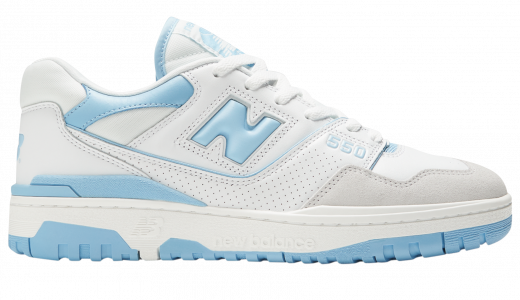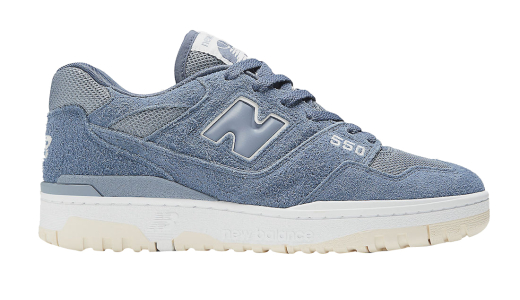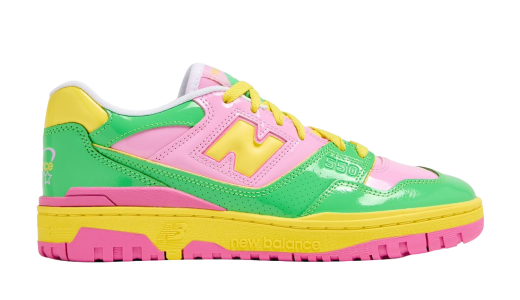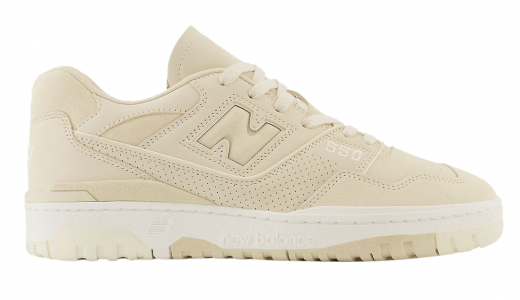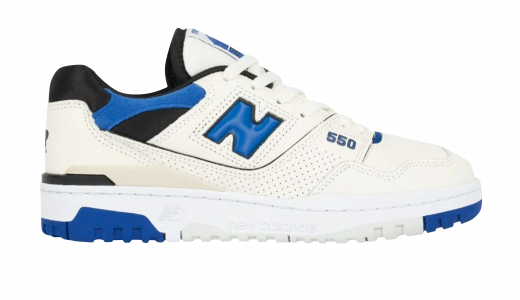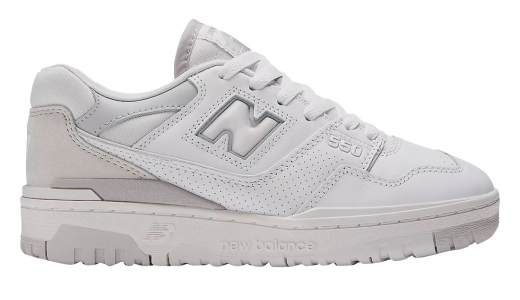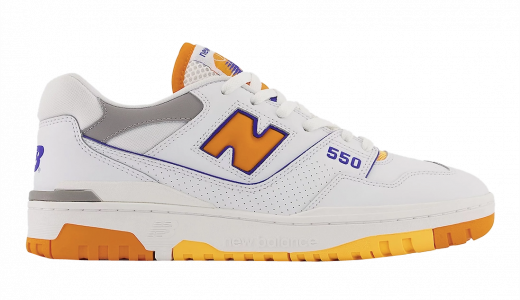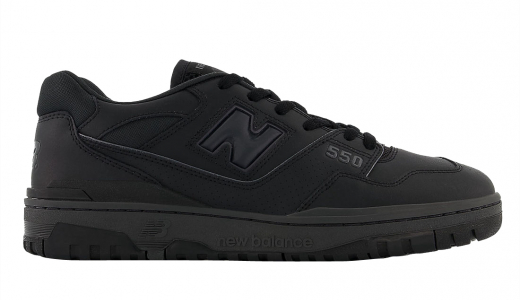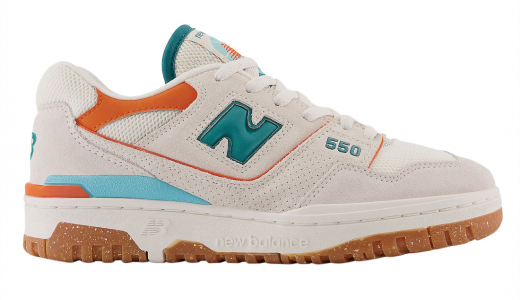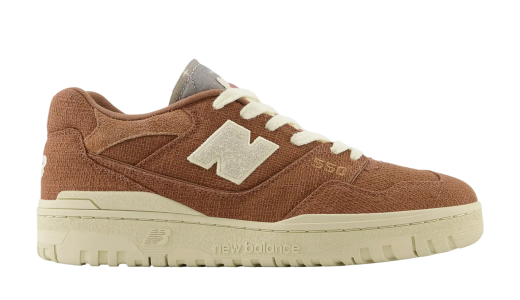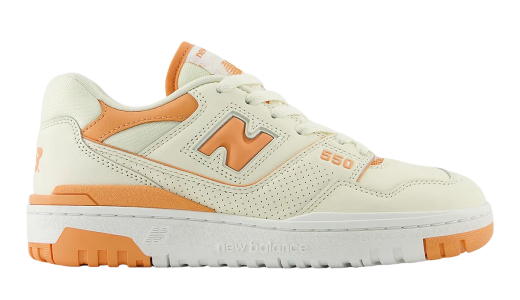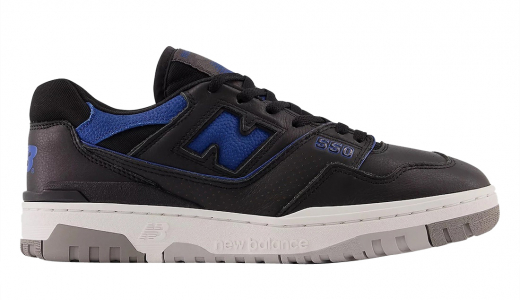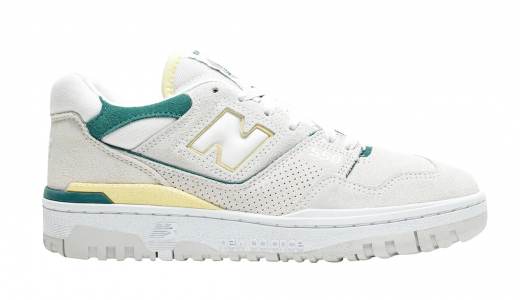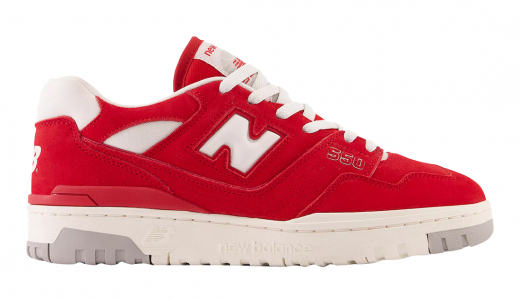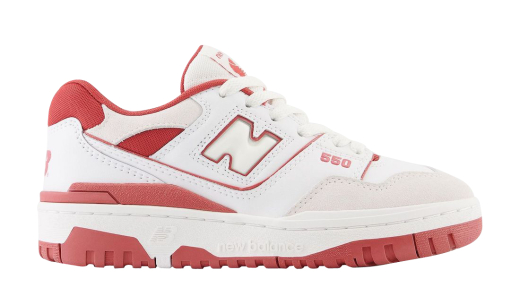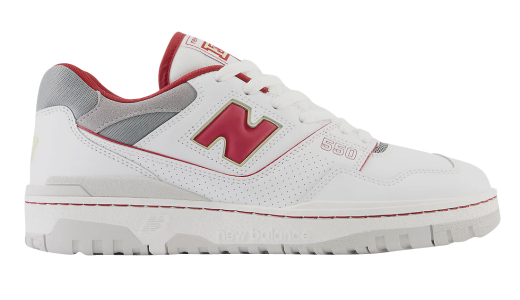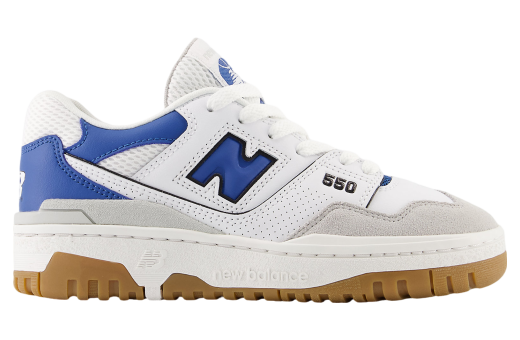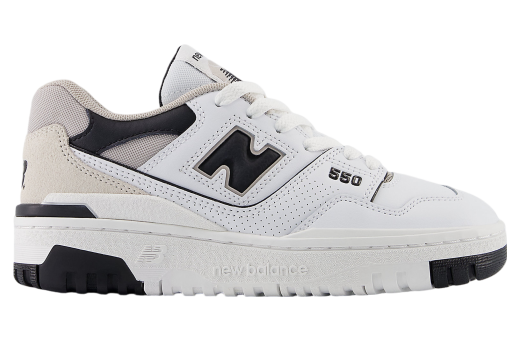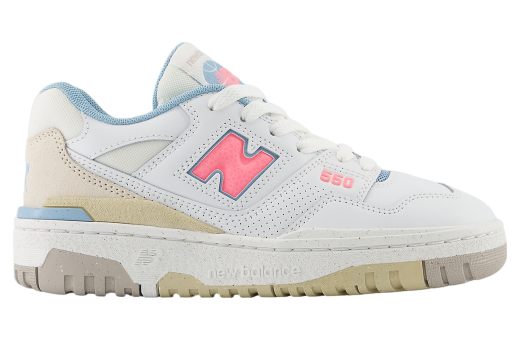New Balance 550
The New Balance 550 has emerged as a beloved classic in the sneaker world, successfully bridging the gap between retro appeal and modern trends. Originally released in 1989, the sneaker was designed as a basketball shoe, featuring a robust build and a straightforward, functional design. Its low-top silhouette, durable leather upper, and perforated details offered both style and performance, making it a favorite on and off the court. Over the years, the 550 has been reinvigorated through several collaborations and re-releases, appealing to a new generation of sneaker enthusiasts seeking a blend of nostalgia and contemporary cool.
Recent iterations of the New Balance 550 maintain the shoe's inherent charm while introducing updated colorways and slight design tweaks to match current fashion sensibilities. These releases often sell out quickly, underscoring the model’s continued relevance in a crowded sneaker market. Notably, high-profile collaborations with brands like Aimé Leon Dore have amplified the 550’s desirability, offering unique interpretations that capture the spirit of both companies involved. This blend of heritage and innovation ensures that the New Balance 550 remains a significant and stylish option for sneaker aficionados worldwide.
History of New Balance 550
The New Balance 550, a sneaker that has ascended to cultural icon status, boasts an intriguing history dating back several decades. Despite basking in contemporary popularity, the sneaker's origins reveal a story of unnoticed potential, a fall into obscurity, and a dramatic revival, fueled by a blend of nostalgia, innovative partnerships, and shifting fashion trends.
Origins in the 1980s:
New Balance, a brand renowned for its commitment to quality and performance, introduced the New Balance 550 in 1989. At the time, the sneaker landscape was dominated by titans like Nike and Adidas, whose innovative designs and high-profile endorsements had captured the public's imagination. Despite this fierce competition, the 550 entered the market, positioning itself primarily as a basketball shoe, poised to cater to athletes who valued functionality and durability over flashy aesthetics.
The original 550 was crafted with a blend of leather and mesh, offering a balance of breathability and sturdiness. It featured a simple color scheme dominated by white, with accents of red, grey, and black. Branding was subtle, with the iconic "NB" logo gracing the sides and tongue, exuding a sense of understated confidence. However, the sneaker's performance-oriented design did not immediately resonate with consumers, and it soon found itself overshadowed by more flamboyant competitors.
The Fall into Obscurity:
Throughout the 1990s and early 2000s, the New Balance 550 quietly faded into relative obscurity. During this period, the sneaker industry witnessed seismic shifts. Brands like Nike continued to innovate with cutting-edge technology and high-profile athlete endorsements, whereas New Balance, while maintaining its steadfast commitment to quality, often remained outside the limelight. The 550, unable to carve out a niche for itself, was discontinued and largely forgotten by the broader sneaker community. Instead, New Balance solidified its reputation in other niches, including running and casual footwear.
The Winds of Change:
In the late 2010s, a confluence of cultural and fashion trends began to set the stage for the unlikely revival of the New Balance 550. Streetwear, once a subcultural phenomenon, had erupted into mainstream fashion, blending high fashion with urban influences. Within this domain, vintage and retro aesthetics gained significant traction. As young consumers and influencers began scouring thrift stores and archives for sneakers that exuded a bygone era’s charm, New Balance—with its rich heritage and history—found itself uniquely positioned to capitalize on this zeitgeist.
Simultaneously, the brand embarked on strategic partnerships to infuse fresh energy into its offerings. One of the pivotal collaborations that catapulted the New Balance 550 back into the spotlight was with Aimé Leon Dore (ALD), a New York-based lifestyle and fashion brand. ALD, founded by Teddy Santis, a designer with a deep reverence for vintage sportswear and East Coast hip-hop aesthetics, saw immense potential in the underappreciated silhouette of the 550.
The Resurgence:
The collaboration between New Balance and Aimé Leon Dore in 2020 marked the beginning of the 550’s renaissance. Reaching back into the archives, Santis found the 550’s understated design and authentic roots appealing, and it resonated deeply with his brand’s ethos. The collaboration led to a reimagining of the sneaker, retaining its original charm while injecting modern sensibilities.
The re-released 550 adhered closely to its original design—a low-top silhouette with a leather and mesh construction, representing both comfort and durability. However, Aimé Leon Dore introduced refreshing colorways and subtle but discernible branding elements that modernized the shoe while maintaining its nostalgic essence. The collaboration was an instant success, with sneakers flying off the shelves and creating immense buzz in the sneaker and fashion communities.
The success of the ALD collaboration signaled to New Balance the untapped potential lying within their archives. The 550’s resurgence proved to be more than just a fleeting trend. Instead, it epitomized the growing consumer demand for authenticity, quality, and nostalgia—a combination that had become increasingly rare in a market saturated with contemporaneous designs and limited-edition drops.
Cultural Impact and Continued Popularity:
Following the initial success with Aimé Leon Dore, New Balance capitalized on the momentum by releasing new colorways and broader collaborations, thus solidifying the 550’s place in modern sneaker culture. The design began appearing frequently on fashion blogs, social media platforms, and the feet of influencers and celebrities alike. Its versatility made it a staple not just within the confines of streetwear, but also in high fashion and casual sportswear, traversing an expansive array of styles and demographics.
One particularly compelling aspect of the 550’s revival has been its ability to transcend generational boundaries. For older consumers, the sneaker invokes a sense of nostalgia, harkening back to an era where functionality took precedence over theatrics. For younger consumers, it presents a refreshing departure from the norm, embodying a blend of retro charm and contemporary relevance.
Furthermore, the resurgence of the 550 underscores a significant shift within the sneaker industry itself. Brands and consumers alike are increasingly recognizing the value of heritage, craftsmanship, and authenticity. Unlike the high-profile endorsement-driven marketing strategies dominated by larger competitors, New Balance's approach—emphasizing quality, rooted simplicity, and meaningful collaborations—struck a chord with a discerning audience.
In subsequent years, New Balance continued to explore and expand the potential of the 550. Collaborations with other brands and designers each brought their unique spin to the classic silhouette, ensuring that it remained fresh and relevant. At the same time, New Balance maintained the core attributes that defined the 550, ensuring that its legacy was preserved even as it evolved to meet contemporary tastes.
Conclusion:
The New Balance 550’s journey from obscurity to reverence encapsulates a profound narrative within the sneaker world. It is a testament to the enduring appeal of authenticity and the cyclical nature of fashion, where what was once overlooked can suddenly become the pinnacle of style. Through strategic partnerships, a keen understanding of market trends, and an unwavering commitment to quality, New Balance managed to revive a forgotten classic, transforming the 550 into a cultural phenomenon.
As with all great stories, the legacy of the New Balance 550 continues to unfold, writing new chapters with every release and collaboration. Whether it remains a focal point of sneaker culture for years to come or inspires future designs, the 550 has undoubtedly cemented its place in the annals of sneaker history—a testament to the power of heritage and the timeless allure of a truly great shoe.
